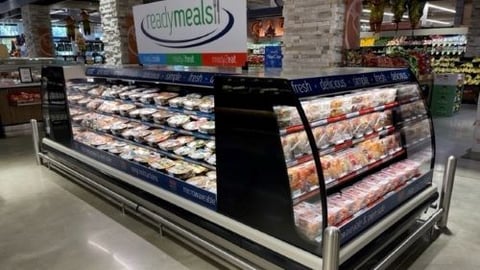Price on Par With Appearance and Ripeness When Buying Produce
According to the “2022 Power of Produce” report from FMI – The Food Industry Association, 25% of shoppers ranked price as the No. 1 factor when deciding to purchase fresh produce, followed closely by appearance (19%), health benefits (19%) and ripeness (15%). The report also provided insights on consumers’ produce shopping habits when it comes to health and well-being and greater preference for locally grown and convenience options.
“In the past, the clear No. 1 factor when buying fresh produce was appearance and quality,” observed Rick Stein, VP of fresh foods at Arlington, Va.-based FMI. “However, this year’s survey showed that item price is now the No. 1 factor produce consumers consider — on par with appearance and quality. In addition to price, consumers are focusing on items with prolonged shelf life, buying less or finding substitutes. At the same time, we see more shoppers concentrate on health and well-being when making fresh produce purchasing decisions, and a strong desire for convenience.”
Ninety-six percent of shoppers consider produce an investment in personal health and well-being. They increasingly link fresh fruits and vegetables to digestive health, weight management and disease management. As a matter of fact, one-third of consumers who pay a lot of attention to health and nutrition likely view fresh produce as playing a key role in their diet, with six in 10 shoppers buying fruits and vegetables to provide specific health benefits. This positive association has driven greater demand for more information on nutrition, health benefits, recommended daily amounts and other healthful insights.
Convenience items such as pre-cut and pre-washed options and grab-and-go and ready-to-serve solutions remain the top value-add for produce shoppers. According to FMI’s report, almost half of shoppers often purchase convenient vegetable (45%) and fruit (48%) solutions. This frequency of purchase led to value-added fruits and vegetables accounting for 14.4% of total fresh product sales in 2021. The share of shoppers expecting to purchase more value-added produce remains high, at 27%, while just 5% think that they will buy less.
Fifty-six percent of consumers said that they want their produce department to offer more locally grown fruits and vegetables, followed by more items grown in the United States (54%). Such distinctions are most effective when coupled with specific locally sourced definitions, such as certain mile radius or state lines. The definition of the term “local” differs, however, depending on the area of the country in which the shopper lives and the generation to which they belong.
FMI’s 2022 “Power of Produce” report was conducted by San Antonio-based 210 Analytics and made possible by the Southeast Produce Council (SEPC), Invafresh and Yerecic Label. The report was presented at SEPC’s 2022 Southern Exposure conference, taking place March 3-5.






